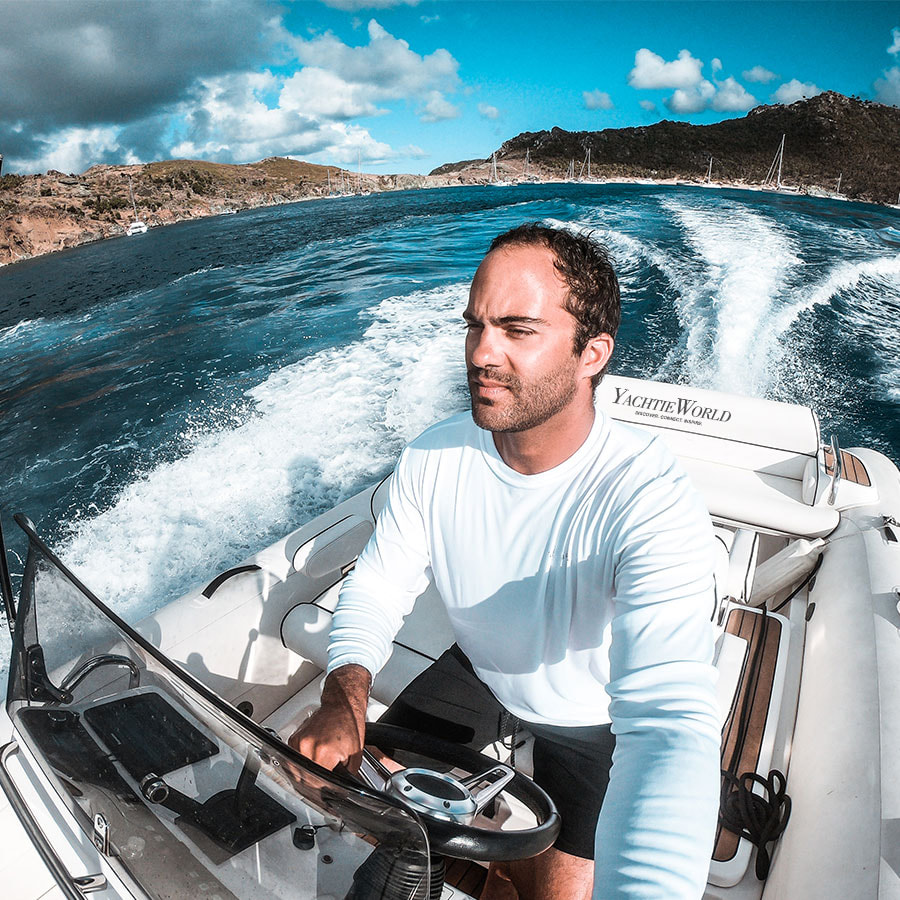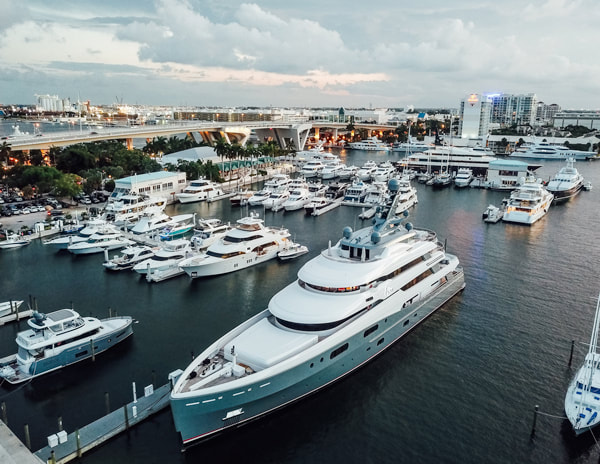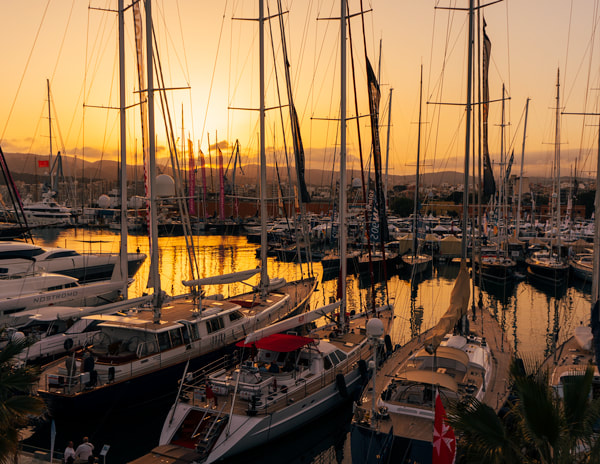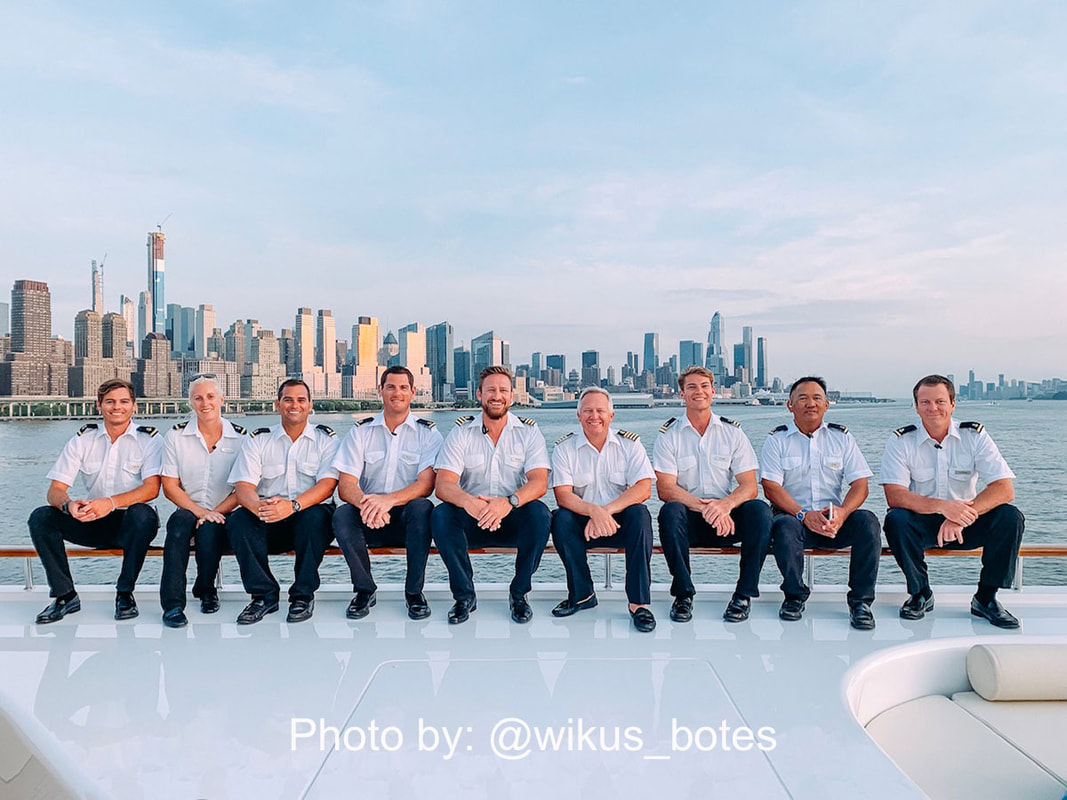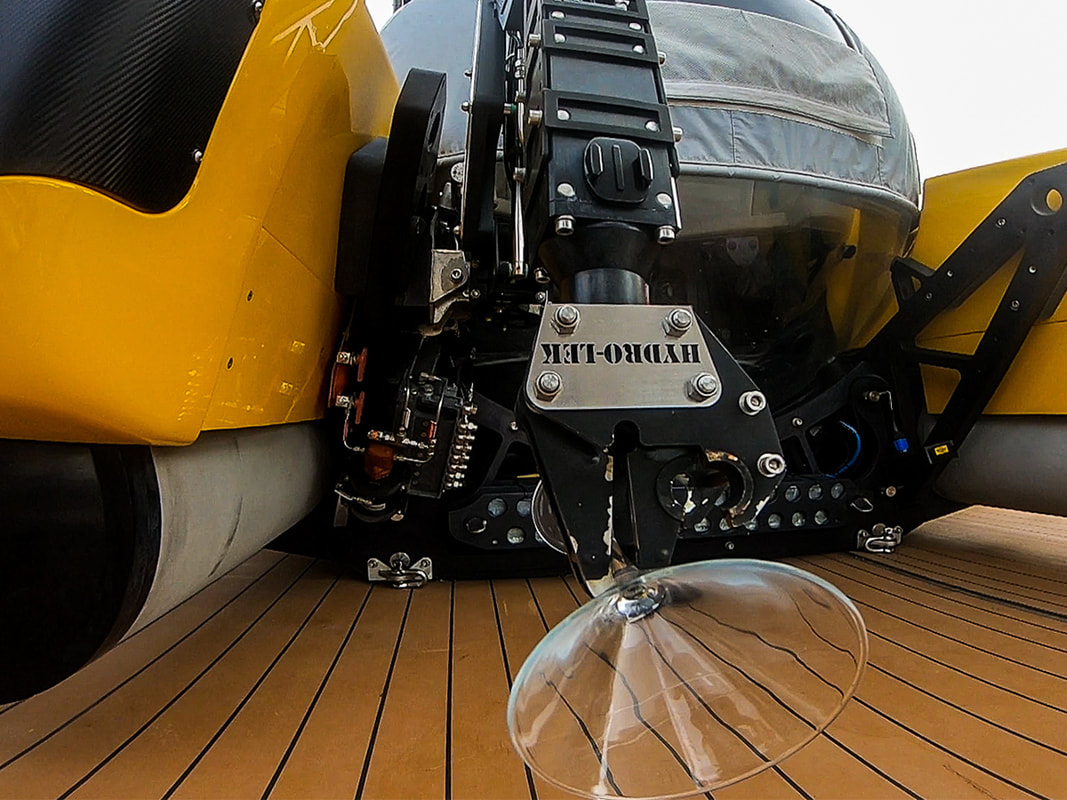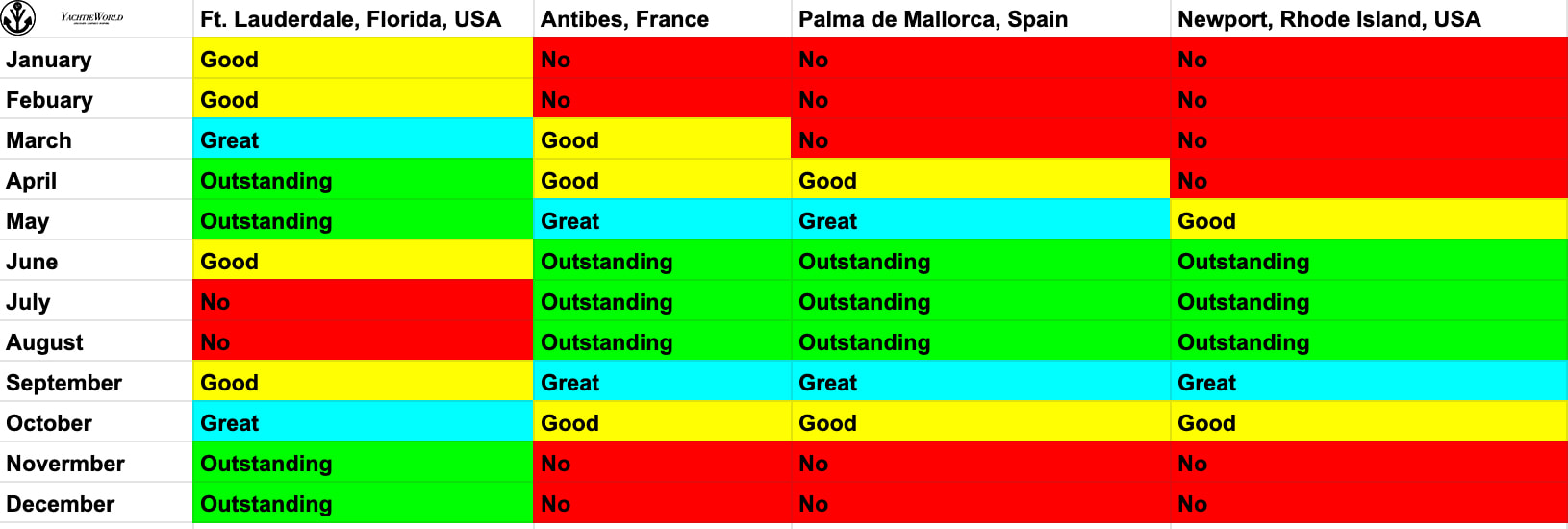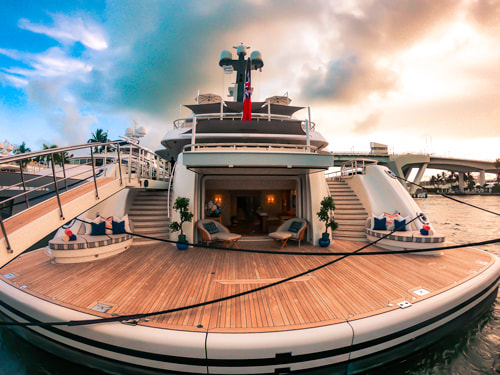AHOY!
This is an introduction to SuperYachting.
Dear future Yachties, I'd like to welcome you to the Yachtie World!
The difference between who you are now and what you want to be is what you do, and If you are the type of person who embraces challenging situations and have a desire to change your lifestyle while traveling the world, then yachting is for you.
Before we get ahead of ourselves, let's get one thing straight. Yachting provides a glamorous lifestyle for yacht owners and guests. Yacht crew are expected to sacrifice time and energy to deliver the highest level of service and comfort possible, which is far from easy. Being pushed beyond your comfort zone is the norm, but it definitely makes you realize how much we are capable of. The experiences, stories, memories, and lessons gained in this luxurious niche are worth it though!
Some perks of working on a Superyacht include:
The difference between who you are now and what you want to be is what you do, and If you are the type of person who embraces challenging situations and have a desire to change your lifestyle while traveling the world, then yachting is for you.
Before we get ahead of ourselves, let's get one thing straight. Yachting provides a glamorous lifestyle for yacht owners and guests. Yacht crew are expected to sacrifice time and energy to deliver the highest level of service and comfort possible, which is far from easy. Being pushed beyond your comfort zone is the norm, but it definitely makes you realize how much we are capable of. The experiences, stories, memories, and lessons gained in this luxurious niche are worth it though!
Some perks of working on a Superyacht include:
- A starting salary that may make you feel like a Rock Star 🌟💸
- Free travel 🛥⛵️
- Living expenses covered 🥘 🛌
- Friends and connections from around the globe 🌍🌎
- Access to exclusive people, places, and events, to name a few things... ⭐️⭐️⭐️⭐️⭐️💫
Understanding the basics.
WHAT IS A SUPERYACHT?
A superyacht or megayacht is a large, luxurious, professionally crewed motor or sailing yacht, ranging from 24 meters (79 ft) to more than 180 meters (590 ft) in length. Each of the largest, most expensive, most over-the-top yachts in the world are custom-built creations that represent the pinnacle of creativity, craftsmanship, luxury, and yes…billionaire bragging rights but every superyacht is as unique as the owner.
Think of these luxurious vessels as being like individual companies for a minute. You have the owner who, well, owns the yacht, and he or she is ultimately in charge. The Captain is like a "CEO" that manages the owner's assets and is responsible for the safe manning and operation of the yacht, and all crew members fall under his command. However, the desired result on a yacht is ultimately determined by guests satisfaction rather than profit. Most yachts are run super professionally, but some are not, which stems down from the top at the end of the day. Do you have an idea of the type of yacht you'd like to work on? Continue reading to learn more.
Think of these luxurious vessels as being like individual companies for a minute. You have the owner who, well, owns the yacht, and he or she is ultimately in charge. The Captain is like a "CEO" that manages the owner's assets and is responsible for the safe manning and operation of the yacht, and all crew members fall under his command. However, the desired result on a yacht is ultimately determined by guests satisfaction rather than profit. Most yachts are run super professionally, but some are not, which stems down from the top at the end of the day. Do you have an idea of the type of yacht you'd like to work on? Continue reading to learn more.
MOTOR YACHT VS SAILING YACHT
Sailing yachts
Sails are the primary means of propulsion for sailing yachts. In recent years, sailing yachts have evolved from relatively simple vessels with basic accommodation into sophisticated, luxurious boats. It can be more cramped, often smaller crews and lower salaries. Sailing yachts are commonly suited for experienced sailors and the more adventurous.
Motor yachts
Have no sails, are usually more spacious, and have more luxurious amenities. Pay is often better than sailing yachts. Motor yachts typically have one or two internal combustion engines that burn diesel fuel or gasoline. Motor yachts are generally more expensive to operate and are better suited for yachties with a good eye for detail.
Sails are the primary means of propulsion for sailing yachts. In recent years, sailing yachts have evolved from relatively simple vessels with basic accommodation into sophisticated, luxurious boats. It can be more cramped, often smaller crews and lower salaries. Sailing yachts are commonly suited for experienced sailors and the more adventurous.
Motor yachts
Have no sails, are usually more spacious, and have more luxurious amenities. Pay is often better than sailing yachts. Motor yachts typically have one or two internal combustion engines that burn diesel fuel or gasoline. Motor yachts are generally more expensive to operate and are better suited for yachties with a good eye for detail.
PRIVATE YACHT VS CHARTER YACHT
Private yachts
Private Sail or Motor Yachts usually have the same guests on board. The crew often work regular hours and are based temporarily in the same location between boss trips.
Pros: Private yachts are great for developing a routine and crew have more of a personal life depending on the owners use.
Cons: Travel depends on the owner, and tips are generally not given.
Charter yachts
Charter Sail or Motor Yachts belong to an owner but is also available for rent (charter) to paying guests usually by the week.
Pros: Crew receive tips from guests, over and above salaries and usually travel a lot more than private yachts.
Cons: Long working hours and very little time for your personal life. Some guests may not tip, although this is uncommon.
Private Sail or Motor Yachts usually have the same guests on board. The crew often work regular hours and are based temporarily in the same location between boss trips.
Pros: Private yachts are great for developing a routine and crew have more of a personal life depending on the owners use.
Cons: Travel depends on the owner, and tips are generally not given.
Charter yachts
Charter Sail or Motor Yachts belong to an owner but is also available for rent (charter) to paying guests usually by the week.
Pros: Crew receive tips from guests, over and above salaries and usually travel a lot more than private yachts.
Cons: Long working hours and very little time for your personal life. Some guests may not tip, although this is uncommon.
SUPERYACHT CREW DEPARTMENTS
CHAIN OF COMMAND ON YACHTS
- Captain
- First Officer/ Chief Mate
- Second Officer / Mate
- Bosun
- Lead Deckhand
- Deckhand
- Lead Deckhand
- Bosun
- Second Officer / Mate
- Chief Engineer
- Second Engineer
- Third Engineer
- ETO
- IT Engineer
- Electrician
- AV Engineer
- Second Engineer
- Purser
- Chief Stewardess
- Head of Housekeeping
- Steward(ess)
- Chief Stewardess
- Head Chef
- Sous Chef
- Crew Chef
- Sous Chef
- First Officer/ Chief Mate
QUALIFICATIONS REQUIRED FOR SUPERYACHT CREW
These are the prerequisites for all crew members on Superyachts.
1. STCW 2010 Basic Safety Training
STCW stands for Standards of Training, Certification, and Watchkeeping. The certification is required by ALL seafarers who are working onboard commercial ships or Superyachts. The primary purpose of the Convention is to promote the safety of life and property at sea.
This one week course consists of four modules.
1) fire prevention and firefighting,
2) personal survival techniques,
3) personal safety and social responsibility,
4) first aid/CPR.
A refresher course is required every 5 years. Check with your maritime school for details.
This one week course consists of four modules.
1) fire prevention and firefighting,
2) personal survival techniques,
3) personal safety and social responsibility,
4) first aid/CPR.
A refresher course is required every 5 years. Check with your maritime school for details.
2. ENG 1 (or equivalent seafarer medical certificate)
The ENG1 is a medical exam set by the MCA (Marine and Coastguard Agency) to establish whether or not anyone working on a seagoing vessel has any medical conditions that might cause him or her to be unable to perform certain duties at sea. The idea behind this is to minimize or prevent potential hazards at sea.
3.Proficiency in Designated Security Duties (PDSD)
The risk of Piracy attacks have increased over the years, making Superyachts an attractive target. ... Guidance from the MCA states that in the event of a security threat on a Superyacht, almost all crew members would have to carry out some form of security-related duty.
These courses are the bare minimum needed to enter the exclusive world of yachting. You'll need to have/do whatever it takes to stand out among a sea of yachties vying for the same title. Highlight the experiences that make you an asset and invest in your training to rise up the ranks.
YACHTING SEASONS
WHEN AND WHERE TO FIND WORK ON A YACHT
This table shows when and where work is most likely to be available for beginner Yachties. Yachts work in seasons, and it is between these seasons (transition periods) when job opportunities are most abundant.
Summer: May-September.
Recommended starting locations while actively searching for work in the summer:
- Antibes, France 🇫🇷
- Palma De Mallorca, Spain 🇪🇸
- Fort Lauderdale, Florida, U.SA 🇺🇸
- West Palm, Beach, U.S.A 🇺🇸
- Newport, Rhode Island, U.S.A 🇺🇸
The most common locations crew base themselves to find work during the summer months are Antibes, France, and Palma De Mallorca, Spain. Many yachts will be doing crossings from the States side to the Med, and if you are prepared and available at the right time (April - May in Fort Lauderdale / Caribbean), you may be lucky enough to cross the Atlantic Ocean and significantly increase your sea miles. Those starting in the Mediterranean will find that between May and September, there will be plenty of job opportunities, but also plenty of competition. You’ll need to hustle!
Alternatively, superyachts may head up to the U.S Northeast for the summer.
Alternatively, superyachts may head up to the U.S Northeast for the summer.
Summer-to-winter transition: September-October
Recommended starting point while actively searching for work during the Summer-to-winter transition period.
- Antibes, France 🇫🇷
- Palma De Mallorca, Spain 🇪🇸
- Fort Lauderdale, Florida, U.SA 🇺🇸
- Newport, Rhode Island, U.S.A 🇺🇸
The Monaco Yacht Show marks the closing of the Superyachting summer season in late September. Yachts typically prepare for maintenance during this period and will head to the shipyards in Europe, South Florida, or the Caribbean, many of which will need dayworkers to keep up with the workload or to replace crew who are on leave. This transition period is a great time to get your foot in the door and gain experience. It is also common for crew to leave their vessels at the end of the summer season for various reasons, opening up job opportunities for candidates who are ready and willing to get to work.
Winter: October to April
Recommended starting point while actively searching for work in the Winter season.
- Fort Lauderdale, Florida, U.SA 🇺🇸
- West Palm, Beach, U.S.A 🇺🇸
- Sint Maarten,Carribean 🇸🇽
The Fort Lauderdale International Boat Show (FLIBS) kicks off the winter season in October / November. In preparation for FLIBS, there is a lot of daywork going around, giving crew a chance to prove themselves for possible positions. Our pick of the top locations to base yourself during this period is Fort Lauderdale, followed by West Palm Beach, and Miami, in that order. If you find yourself in Fort Lauderdale, the others are a convenient train ride + Uber away. The Caribbean and the Bahamas are popular for superyachts during the winter season. But, you may find it challenging to enter Sint Maarten (the central hub in the Caribbean) without boat papers or the correct visas, so I recommend this as a starting point once you have a little more experience in the game. The peak season officially starts in November.
Winter-to-summer transition: April - May
Recommended starting point while actively searching for work in the winter-to-summer transition period.
- Fort Lauderdale, Florida, U.SA 🇺🇸
- West Palm, Beach, U.S.A 🇺🇸
- Antibes, France 🇫🇷
- Palma De Mallorca, Spain 🇪🇸
During this period, the majority of yachts will head to South Florida from the Caribbean and Bahamas for maintenance, summer preparations, and much-needed downtime for the crew before the summer season begins.The winter-to-summer transition period is an excellent time to find daywork and possibly secure a permanent position, as many yachties change jobs, go home, travel, etc. Many jobs open up, so be prepared. Boat’s who remained in the Med during the winter months may also experience a crew change over, and some boats may cross the Atlantic early.
Applying for jobs
First impressions count!
Super yachting requires attention to detail, which means your CV needs to help you stand out. Be professional.
1. A PROFESSIONAL PHOTOGRAPH
In the maritime industry, those CVs without a professional photograph tend to find themselves in the bin first. Remember, a smart appearance is extremely important on board; make sure you look well-groomed, cover any tattoos and remove any piercings. You may not realize it, but you have changed a lot in the last three years so make sure to update your crew photo annually.
2. YOUR PAST EXPERIENCE
If you’ve been doing day work, make sure you add each position to your CV as you go before you forget! Include the yacht name and what your duties were, and whenever possible, ask the captain for a reference. If you don’t do this as you go, you are at risk of forgetting your posts and a captain may wonder about gaps in your experience.
3. ADD REFERENCES
It’s always useful to include a few professional references at the end of your CV if possible, and ask employers to endorse you on LinkedIn – there’s room for much more information here.
How to format your Yacht Crew CV/Resume?
Typically, you have between three and six seconds to catch the captain’s attention. Captains don’t have long to look through applications, so your CV needs to be a maximum of two pages to stand the best chance of landing that yacht job.
Opt for a classic font that is both professional and aesthetically pleasing making it easy to read, and use subheadings and bold fonts to keep things organized. Laurence Lewis, director of YPI Crew said, “The key to writing an effective CV is simplicity, clarity, and tidiness. As you only have a very short time to grab the captain’s attention, we recommend that you ‘test-run’ your CV with friends or family.”
Required information:
Proofread and request feedback on your Yacht Crew CV/ResumeIt may sound obvious, but before printing or sending any CVs, make sure you proofread for spelling and grammar mistakes; you can’t boast about having ‘great attention to detail’ when there are obvious mistakes on your CV, after all! Ask someone in the industry for his or her opinion on your CV. You should question them on its presentation, its content and ask them to do a final proofread before committing to printing off a few dozen copies to be distributed.
Super yachting requires attention to detail, which means your CV needs to help you stand out. Be professional.
1. A PROFESSIONAL PHOTOGRAPH
In the maritime industry, those CVs without a professional photograph tend to find themselves in the bin first. Remember, a smart appearance is extremely important on board; make sure you look well-groomed, cover any tattoos and remove any piercings. You may not realize it, but you have changed a lot in the last three years so make sure to update your crew photo annually.
2. YOUR PAST EXPERIENCE
If you’ve been doing day work, make sure you add each position to your CV as you go before you forget! Include the yacht name and what your duties were, and whenever possible, ask the captain for a reference. If you don’t do this as you go, you are at risk of forgetting your posts and a captain may wonder about gaps in your experience.
3. ADD REFERENCES
It’s always useful to include a few professional references at the end of your CV if possible, and ask employers to endorse you on LinkedIn – there’s room for much more information here.
How to format your Yacht Crew CV/Resume?
Typically, you have between three and six seconds to catch the captain’s attention. Captains don’t have long to look through applications, so your CV needs to be a maximum of two pages to stand the best chance of landing that yacht job.
Opt for a classic font that is both professional and aesthetically pleasing making it easy to read, and use subheadings and bold fonts to keep things organized. Laurence Lewis, director of YPI Crew said, “The key to writing an effective CV is simplicity, clarity, and tidiness. As you only have a very short time to grab the captain’s attention, we recommend that you ‘test-run’ your CV with friends or family.”
Required information:
- Your full name
- A current and professional passport photograph
- A current mobile number, location, and email address
- Your nationality
- The details of any visas that you may currently hold with expiration dates
- Your marital status
- Your smoking habits, visible tattoos, and piercings
- A concise profile or an objective paragraph summarizing your experience and unique selling point
- Your listed yachting experience, including employment dates, yacht name, and size and the position held with a list of duties, listed in reverse order with the most recent first
- Your additional qualifications and relevant work experience, again listed in reverse time order
- Your hobbies and interests
- Details of your references or a few short endorsements
Proofread and request feedback on your Yacht Crew CV/ResumeIt may sound obvious, but before printing or sending any CVs, make sure you proofread for spelling and grammar mistakes; you can’t boast about having ‘great attention to detail’ when there are obvious mistakes on your CV, after all! Ask someone in the industry for his or her opinion on your CV. You should question them on its presentation, its content and ask them to do a final proofread before committing to printing off a few dozen copies to be distributed.
| BASIC_yachtieworld cv_template_.docx | |
| File Size: | 57 kb |
| File Type: | docx |
| yachtieworld_cv_template__example_.docx | |
| File Size: | 17 kb |
| File Type: | docx |

